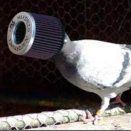Turbo Dose
Announcements
-
Similar Content
-
Latest Posts
-
By Dose Pipe Sutututu · Posted
That dirty voltage drop is the culprit I suspect -
i cant get them all in 1 screenshot unfortunately as i just dont know how to move things around tbh, but they are all from the same log and the line crosses at the same point for all of them
-
It's about time I start work on my sun tan. So I knocked up a few parts that will all combine together to become my new power steering reservoir. Now just to produce an abundance of UV and IR rays while melting a heap of bits of alu to become one... Well, that's after I put one more hole in it for the return line to plumb to. It likely won't be this weekend, as Sunday I'm meant to be in doing some last minute stuff to the AMG race car, and the weekend after will be filled with non my Skyline stuff, followed by Bathurst 6 hour. So I don't expect to get to melt metal for at least 3 weeks. I also managed to stuff up and start cutting the hole for the res to pump pipe on the wrong side of the line... It means instead of the lines being nice and tight against the inner guard, they'll be out off the guard. The size of it means I should end up with about 1.8L of power steering fluid, and still have space for another half a litre before it reaches the overflow/breather. This is wayyyyyyy more capacity than factory, which should help keep Powersteer oil temps lower, and the design hopefully allows it to prevent any aerated oil being able to makes its way down to the bottom as it'll have a couple of baffles and some hopeful trickery to force air bubbles away from the bottom.
-
The log you did with ECU voltage, can you log the other things too like rpm and oil pressure? Need all that info together to compare easily
-
Editting as I hit post to soon, and this will lock out otherwise.
-





Recommended Posts